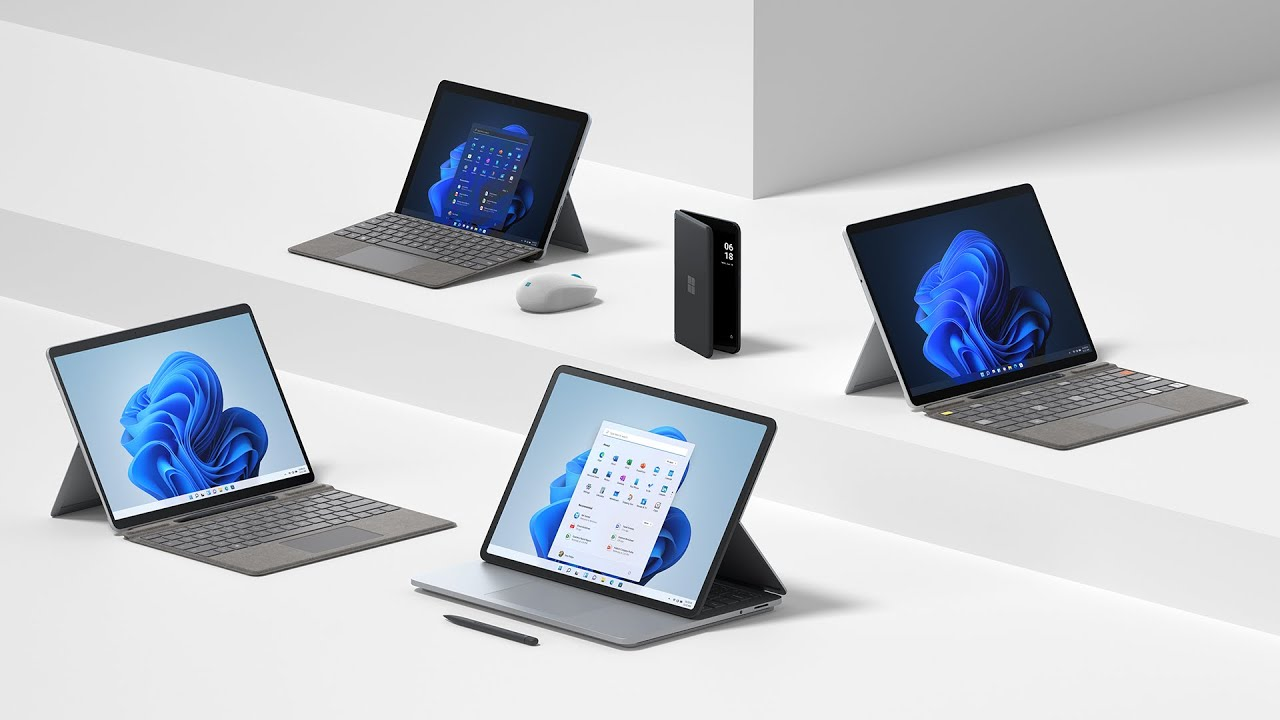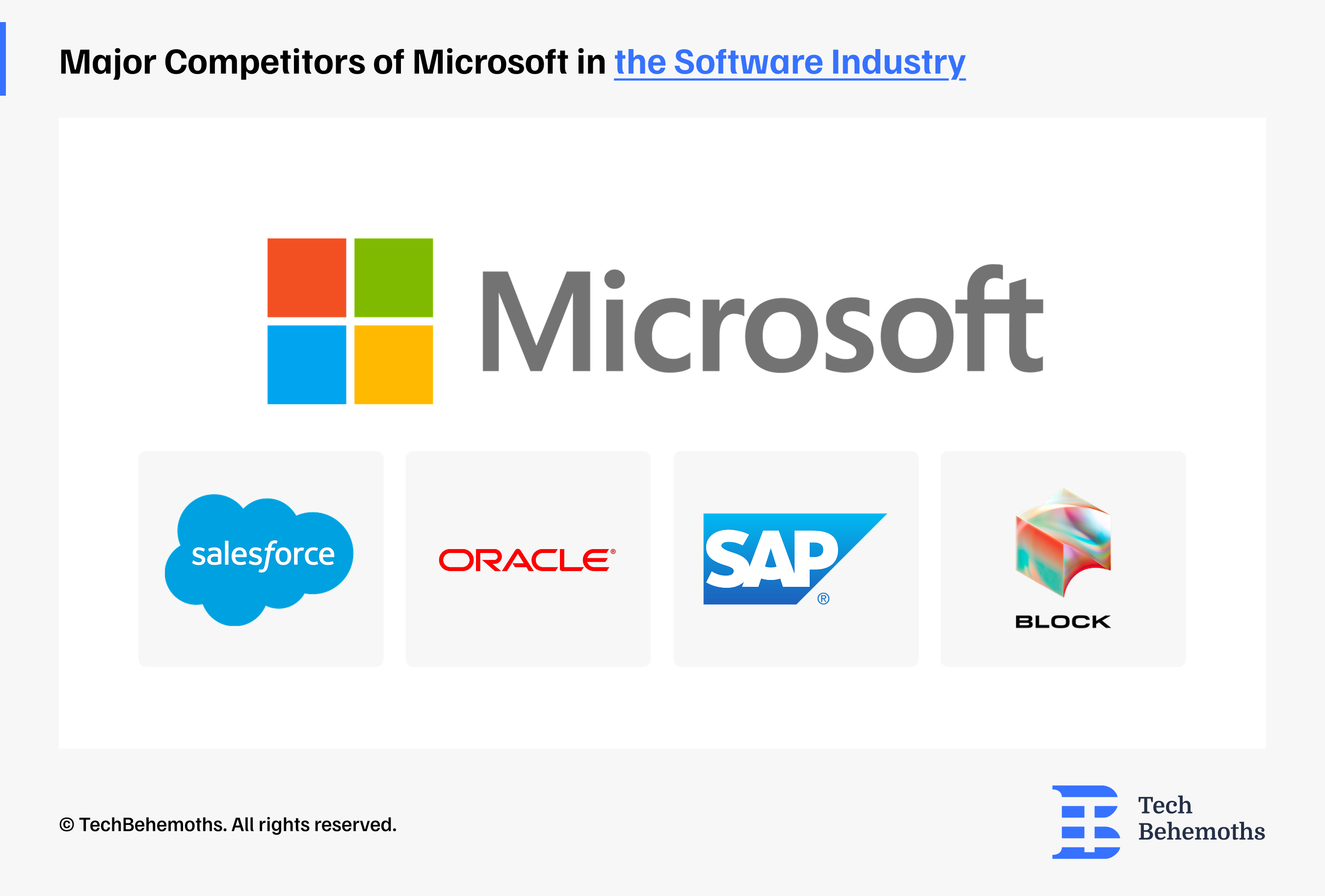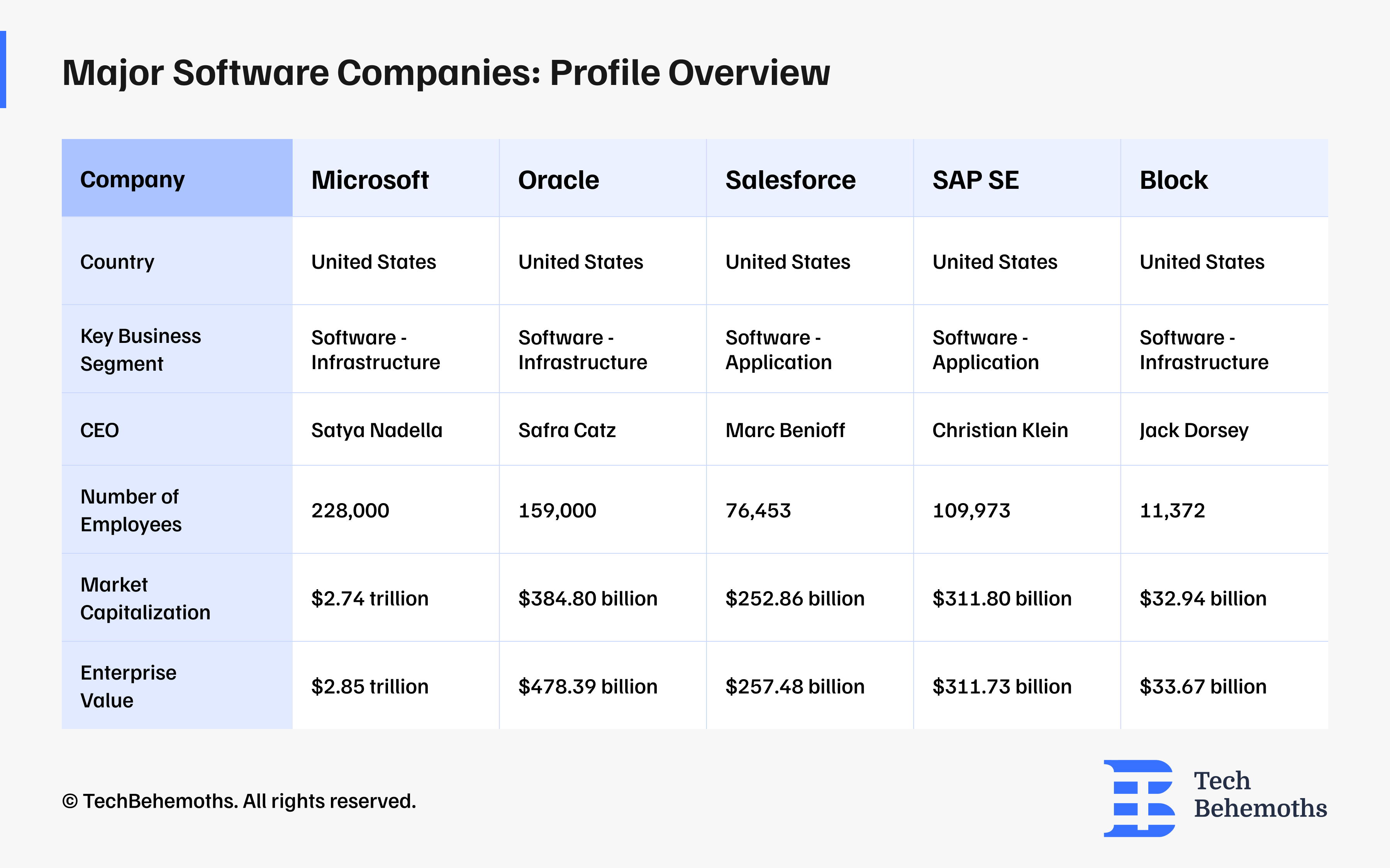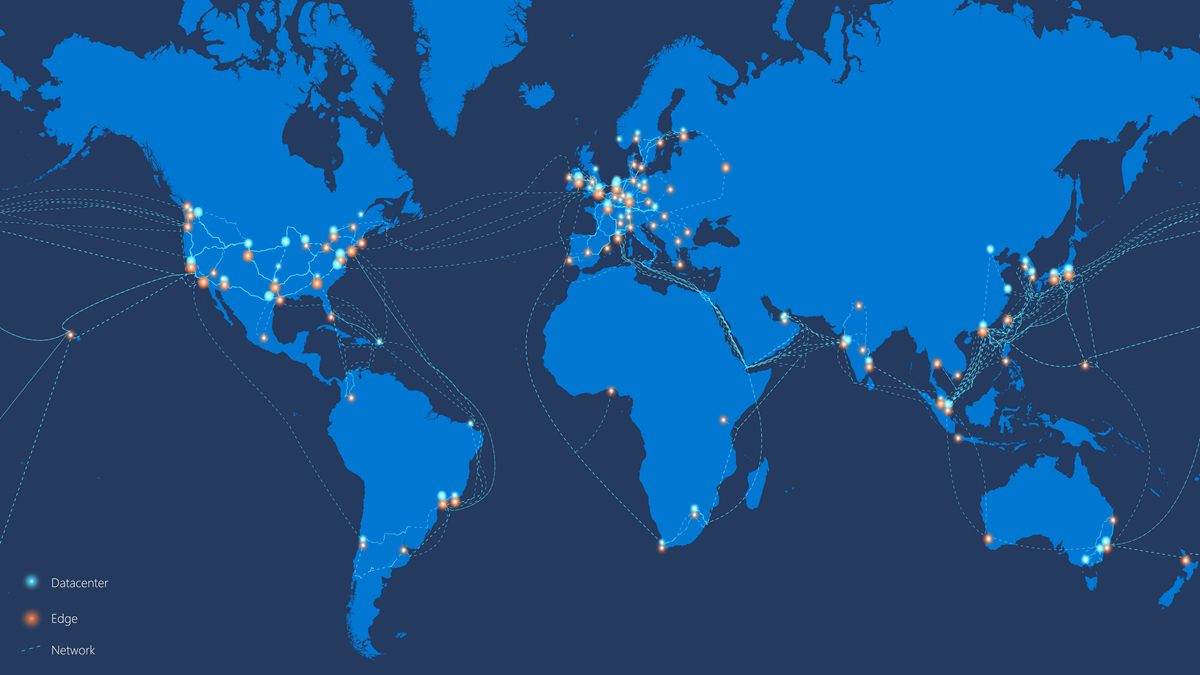Is Microsoft still the Largest Software Company in the World?

In the current conditions of rapid digitalization and increasing consumer needs for technological services for both corporate and personal use, the software industry has become one of the most developed branches of the technological market.
The growth of the software industry into one of the most valuable markets has been driven by the increasing demand for cloud computing, AI, and enterprise solutions. The expansion of the data-driven economy and the growing need for automation and cybersecurity, along with the rapid adoption of SaaS (Software as a Service) models, continue to contribute significantly to this transformation.
The advantage of identifying the largest software company is that it gives us a clear perception of the dominance of this industry in the tech market, serves as a generator of innovation directions, certainly influences the economy, discovers investment opportunities, and simply shapes the future of the technology sector.
Microsoft is a well-known company in this industry. It is actually the first company that comes to mind when you think of large software services or products, but let's see through the lens of this article if it is still as it is supposed to be and is indeed the largest software company in the world.
What is Software?
According to “software, instructions that tell a computer what to do. Software comprises the entire set of programs, procedures, and routines associated with the operation of a computer system. The term was coined to differentiate these instructions from hardware—i.e., the physical components of a computer system. A set of instructions that directs a computer’s hardware to perform a task is called a program, or software program.”
People, in fact, use a variety of types of software daily with considerable frequency, but many of them are not even aware of it. Social media, navigation apps, online banking—it's all software. Thus, our daily routines quietly depend on digital tools and software systems more than we think.
For a better understanding of how a software system works and what role it plays, we need to discover how software is classified and what concrete examples illustrate it.
|
Role |
Type of software |
Examples |
|
Manages hardware resources and core system functions |
System Software |
Operating systems (Windows, Linux, macOS), utilities (antivirus, disk management) |
|
Enables users to perform specific tasks for work, education, or entertainment |
Application Software |
Word processors (Microsoft Word), design tools (Adobe Photoshop), web browsers, games |
|
Ensures communication between the operating system and hardware components |
Driver Software |
GPU drivers (NVIDIA, AMD), printer drivers, USB controllers, sound card drivers |
|
Facilitates communication and data exchange between different software systems |
Middleware |
API management tools, integration platforms (IBM WebSphere, Oracle Fusion) |
|
Provides tools for writing, debugging, and compiling code for software development |
Programming Software |
IDEs (Visual Studio, IntelliJ IDEA), compilers (GCC, Clang), interpreters (Python, Java) |
|
Controls embedded systems and specific hardware devices for automation and real-time operations |
Embedded Software |
Firmware for IoT devices, software for medical equipment, automotive control systems |
|
Manages large-scale enterprise processes, data, and operations |
Enterprise Software |
ERP (SAP, Oracle ERP), CRM (Salesforce, HubSpot), database management systems |
|
Supports cloud computing, providing on-demand resources and services |
Cloud Software |
AWS, Microsoft Azure, Google Cloud, SaaS platforms (Dropbox, Google Workspace) |
|
Protects systems and data from cyber threats and vulnerabilities |
Security Software |
Firewalls, encryption tools, antivirus software, VPNs |
Many types of software presented in the table above can be found as solutions offered by companies listed on 起点传媒 or accessed directly from our list of services.
Criteria Used for Determining the Largest Software Company
There are several criteria by which we can determine the supremacy of a single company to the detriment of others. This can be determined by involving and studying certain criteria:
-
General Economic and Financial Indicators
The analysis and comparison method of economic and financial indicators, such as Revenue, Market Capitalization, Share Price, etc. become the basic economic information that makes it possible to determine the state or a certain status of the company, and as in our case it helps us to determine - the Largest Software Company in the World, but from the aspect of economic results.
-
Number of Employees and Global Presence
The number of employees and global presence in the software market provide a clear vision of the company's size and coverage. This indicator not only reflects its influence in the industry but also its ability to stimulate innovation globally.
-
Software Focus and Specialization
The level of specialization and focus on software is the essential criterion in uncovering this topic, as it shows how a company stands in the market, its expertise in certain areas, and how well it meets the needs of its customers.
Consequently, based on the criteria outlined above, is Microsoft currently the world's largest software company? Let's have a closer look.
A Brief History of Microsoft: From Startup to Tech Giant
The history of Microsoft began when the two friends Bill Gates and Paul Allen, inspired by the January cover of Popular Electronics magazine, initiated the first version of Microsoft for microprocessors and software – to develop software for the Altair 8800, a personal computer model at the time.

As presented on the official website, in 1980, the two agreed to provide the operating system for IBM's first personal computer. Microsoft launched Windows in 1985, a year before moving its headquarters to Redmond, Washington. By the end of the 1980s, Microsoft was the largest personal computer software company in the world and continues to amaze us with its power and grandeur in the tech world to this day.
Microsoft's Key Products
As is already known, Microsoft Corporation develops and supports software, services, and devices that offer dozens of solutions worldwide.
Here are some of the primary and services that Microsoft offers to its customers:
-
The Productivity and Business Processes division offers a wide range of products and services, including Office, Exchange, SharePoint, Microsoft Teams, Office 365 Security and Compliance, Microsoft Viva, and Microsoft 365 Copilot. This division also offers consumer office services, such as Microsoft 365 consumer subscriptions, Office on-premises licensing, and additional office-related services.
-
In addition, this section includes LinkedIn and dynamic business solutions with Dynamics 365. This collection consists of intelligent, cloud-based applications covering Enterprise Resource Planning (ERP), Customer Relationship Management (CRM), Power Apps, and Power Automate, as well as on-premises ERP and CRM applications.
-
Intelligent Cloud division focuses on server products and cloud services such as Azure, along with other cloud options. It includes SQL Server, Windows Server, Visual Studio, System Center, and associated client access licenses, along with offerings from Nuance and GitHub. Enterprise Services is also part of this division, which includes enterprise support services, industry solutions, and specialized professional services.
-
More Personal Computing segment offers Windows, which includes OEM licenses as well as non-volume licenses for the Windows operating system. This segment also covers Windows Advertising, which refers to volume licensing for Windows, Windows cloud services, and various Windows commercial products. Additional offerings include patent licensing, Windows Internet of Things (IoT), and devices such as Surface, HoloLens, and PC accessories.

-
Furthermore, this segment includes Gaming, which includes Xbox hardware and content, as well as third-party offerings. It offers Xbox Game Pass, various subscriptions, cloud gaming services, advertising, third-party disc royalties, and additional cloud offerings. This segment also covers search and news advertising related to Bing, Microsoft News, Edge, and third-party partners.
The company sells its products through original equipment manufacturers (OEMs), distributors, resellers, and directly through digital marketplaces, online stores, and physical stores.
Comparative Financial Performance Analysis of Competitors

The largest software companies have enviable revenues and profit margins. As a result of the industry-wide shift to subscription-based cloud computing and software-as-a-service, many of the top software service providers have a large recurring revenue base.

All financial data used in this analysis is sourced from , April 2025.
1. Microsoft Corporation (MSFT)
Microsoft Corporation is a global leader in software, services, and devices. Its business segments include Productivity and Business Processes, offering services like Microsoft 365 and LinkedIn; Intelligent Cloud, focusing on cloud services like Azure; and More Personal Computing, which covers Windows, gaming (Xbox), and devices like Surface. The company provides a wide range of solutions across various industries.
-
Country: United States
-
Key Business Segment: Software - Infrastructure
-
Number of Employees: 228,000
-
Market Capitalization: $2.74 trillion
The company was founded in 1975 and is headquartered in Redmond, Washington.
2. Oracle Corporation (ORCL)
Oracle Corporation provides a wide range of enterprise IT solutions globally, including cloud-based software applications like ERP, human capital management, and healthcare solutions. It offers cloud infrastructure technologies such as databases, computing, and networking, along with hardware products and support services. Oracle also provides consulting and customer services and markets its products directly and through indirect channels to businesses, governments, and educational institutions.
-
Country: United States
-
Key Business Segment: Software - Infrastructure
-
Number of Employees: 159,000
-
Market Capitalization: $384.80 billion
Oracle Corporation was founded in 1977 and is headquartered in Austin, Texas.
3. Salesforce, Inc. (CRM)
Salesforce, Inc. offers customer relationship management (CRM) technology that connects companies and customers globally. Its products include Agentforce, Data Cloud, Industries AI, Salesforce Starter for small businesses, Slack, Tableau for analytics, MuleSoft for connected experiences, and various marketing and commerce services. Additionally, Salesforce provides field service solutions that help companies manage service agents and jobs efficiently.
-
Country: United States
-
Key Business Segment: Software - Application
-
Number of Employees: 76,453
-
Market Capitalization: $252.86 billion
Salesforce, Inc. was incorporated in 1999 and is headquartered in San Francisco, California.
4. SAP SE (SAP)
SAP SE provides enterprise applications and business solutions worldwide. Its offerings include SAP S/4HANA for finance, supply chain, and asset management, SAP SuccessFactors for HR and employee management, and spend management solutions. The company also provides SAP Customer Experience, Business Technology Platform, Business Network, and SAP Signavio for process analysis and digitalization. Additionally, SAP offers solutions for enterprise architecture management, workflow execution, e-learning, working capital, and sustainability services.
-
Country: Germany
-
Key Business Segment: Software - Application
-
Number of Employees: 109,973
-
Market Capitalization: $311.80 billion
The company was founded in 1972 and is headquartered in Walldorf, Germany.
5. Block, Inc. (XYZ)
Block, Inc. (formerly Square, Inc.) offers commerce and financial services through two segments: Square, which provides payment solutions and business services, and Cash App, which offers financial tools like peer-to-peer payments and investment options. It also operates TIDAL (music platform), TBD (decentralized finance), Bitkey (bitcoin wallet), and Spiral (bitcoin open-source work).
-
Country: United States
-
Key Business Segment: Software - Infrastructure
-
Number of Employees: 11,372
-
Market Capitalization: $32.94 billion
Block, Inc. was incorporated in 2009 and is based in Oakland, California.
The table below represents the income statements of Microsoft and its competitors in the software industry, recorded in the last 12 months.
Data visualization
As you can see, Microsoft's other competitors have recorded notable results in the last 12 months, but Microsoft still occupies the first position of the 5 companies analyzed, recording a total revenue of $261.8 billion and $92.75 billion net income.
Oracle is the second most profitable software company in the world, with a net income of $12.16 billion. In third place, according to total revenue, would be Salesforce, with $37.9 billion for the year 2024. Finally, the companies SAP and Block obtained a total revenue of $35.38 billion and $24.12 billion, respectively.
The EBIT value of $117.71 billion for the last 12 months indicates increased operational profitability for Microsoft, which demonstrates its efficiency in generating profits from its main operations, excluding financial costs and taxes.
Microsoft also leads in earnings per share (EPS) with $12.41 billion, reflecting its strong profitability and efficient cost management. Next in line are Salesforce ($6.36 billion) and Block ($4.56 billion), showing solid earnings, while Oracle ($4.26 billion) maintains stability with its diversified cloud and software business. SAP, at $2.74 billion, lags behind, possibly due to higher costs or reinvestment strategies.
All of these metrics outline profitability, operational efficiency, and market positioning, confirming that Microsoft remains the top software company in the world.
Microsoft's Global Presence and Employees
Although Microsoft Corporation (MSFT) was founded in the USA, over the years, it has increased its global presence, expanding into 4 distinct geographical regions: Africa + Middle East; Asia + Pacific; Americas; and Europe.
Microsoft owns and operates one of the largest backbone networks in the world. This global and sophisticated architecture, spanning more than 165,000 miles, connects its data centers and customers.
Customers around the world connect and pass trillions of requests daily to Microsoft Azure, Bing, Dynamics 365, Microsoft 365, Xbox, and many others, and regardless of type, customers expect instant reliability and responsiveness from services.
The Microsoft global network (WAN) is a central part of delivering a great cloud experience. The connects Microsoft data centers across 61 Azure regions with a large mesh of edge nodes strategically placed around the world. The Microsoft global network offers both availability, capacity, and flexibility to meet any demand.
Microsoft Global Network
It is worth noting that, globally, there is a tendency for most software companies to concentrate in the USA. The reasons for this could be different, such as the fact that large software companies concentrate there because the US market offers them much broader opportunities, both strategically and economically.
The main reasons for the concentration of software companies in the USA are:
-
Economic strength, huge consumer market for software, and obviously customers with high purchasing power, a fact specific to large corporations but also ordinary consumers
-
Access to capital and investments, accelerators, and venture funds, which encourage and greatly facilitate the path of startups
-
The culture of innovation and entrepreneurship offers openness to partnerships, incubators, and a vast technological ecosystem while also attracting international talents through salaries
-
Universities like MIT, Stanford, and Harvard train highly qualified IT specialists while also attracting international talents through competitive salaries and development opportunities
-
Favourable regulations and tax advantages for the IT sector, highlighted by laws that protect intellectual property rights or even individual states that offer tax advantages for tech companies, such as Delaware or Texas (read more about this in our article Why Are Tech 起点传媒 Moving To Texas?)
Therefore, the USA has always been and continues to be a magnet for software companies, offering them favorable conditions for the development of software industry business models, facilitating their smooth integration into this market.
Microsoft operates in over and is made up of approximately 228,000 qualified employees worldwide.

Looking at this chart, it can be deduced that from 1990 to 2024, the number of employees at Microsoft grew consistently and significantly each year. This can only mean that for 34 years, the company has gradually developed and expanded, increasing its number of locations worldwide and, respectively, generating hundreds of thousands of jobs. This is impressive because such a huge number of locations and people eager to work at Microsoft validates the fact that their global presence is truly impactful.
Are Apple and Google True Competitors to Microsoft?
It is curious that usually, when we think of Microsoft's competitors, we think of similarly extensive companies, visualizing other tech giants rivals such as Apple or Google.
Yes, it's true that both offer software products, but this is not their core business, as is the case with Microsoft. This is the real reason why they cannot be considered its direct competitors. Therefore, we can only mention them tangentially in this article because it is not about them this time, especially since we have already identified their real competition in the previous chapter.
Let's explore why other software giants cannot compete with Microsoft in the software industry.
Apple Inc. (AAPL)
Apple is not one of the top software companies because most of its revenue is generated from hardware (iPhones, Macs, iPads). Unlike Microsoft or Oracle, Apple does not sell software as a service (SaaS) on a global scale.
-
In the last 12 months, Apple had a total revenue of $395.76 billion and earned $96.15 billion in profits. Earnings per share was $6.28.
-
Software and services revenue was approximately $85 billion (a lot, but below Microsoft and Google)
If the ranking were made of mixed tech companies (hardware + software), Apple would be in first place. However, as a pure software company, it does not dominate this segment.
Alphabet Inc. (GOOG)
Google can't be considered a direct competitor for Microsoft because most of its revenue comes from advertising, not from selling software. Google Cloud is growing, but it's still behind Microsoft Azure and AWS. It also has dominant software (Android, Google Search) but monetizes it differently.
-
In the last 12 months, Alphabet had a revenue of $350.02 billion and earned $100.12 billion in profits. Earnings per share was $8.04.
-
Software and cloud revenue was approximately $80-100 billion
In consequence, Google is more of a digital advertising company with a strong software ecosystem but is not a leader in direct software sales like Microsoft.
Thus, as much as it would seem that these two tech giants would be some of Microsoft's competitors, that's not the case, especially if we analyze them only from the perspective of the largest software companies. Incontestably, Microsoft remains the leader in pure software sales. While Apple and Google have significant software divisions, they operate under different business models, making them only indirect competitors to Microsoft.
Future Trends and Industry Projections
Artificial intelligence will play a central role in Microsoft’s future. As OpenAI's major contributor, the tech giant is considered a leading contender among Big Tech companies in the AI race due to its exclusive partnership with the AI chatbot maker.
Microsoft Corporation (MSFT) on developing data centers to train artificial intelligence (AI) models and deploy AI and cloud-based applications, the company said in a blog post earlier this year.
Investment in AI has surged since OpenAI launched ChatGPT in 2022 as companies across sectors seek to integrate artificial intelligence into their products and services.
Analyzing industry projections, we can confirm that the software industry is expected to experience significant growth globally, and the enterprise sector will be the one that will lead this industry, with an estimated market volume of USD 647.89 billion by 2029, growing at a compound annual growth rate (CAGR) of 6.15% from 2023.
According to , the software market revenue is estimated to show a consistent annual growth rate of 4.87% from 2025 to 2029. This growth is likely to lead to a significant increase in the market volume, reaching USD 896.17 billion by 2029. In a global context, it is important to highlight that the United States in 2029 is expected to reach USD 392.17 billion. This underlines the substantial market influence and prospects of the United States in the global software market and demonstrates that, in the international software sector, the United States is the leader with its cutting-edge technology startups and leaders in cloud computing services.
Conclusion
This certainly sounds controversial, but based on what was discovered in this article, Microsoft, from certain criteria, holds a monopoly on what the pure software industry entails.
Depending on the perspective you look at it from, Microsoft's status and positioning can be treated differently. Looking from the aspect of financial position compared to competitors, Microsoft ranks first in the top of the most profitable companies with software services.
Oracle, Salesforce, SAP, and Block are Microsoft's direct competitors in the pure software industry. See the comparative analysis in the Revenue & Profitability Metrics table.
Microsoft Global Presence is motivated by the fact that it owns and operates one of the largest backbone networks in the world. It has expanded to over 190 countries and has a global workforce of approximately 228,000 skilled employees.
Regarding the hardware-software ecosystem, Microsoft does not occupy the first position among the companies in this particular industry, this place being taken by Apple, followed, in turn, by Google, its indirect competitors in the software industry. Apple generates most of its revenue from hardware, while Google (Alphabet) earns the majority of its revenue from advertising, not from software sales directly.
Artificial intelligence is set to be a key driver of Microsoft's future growth. It plans to continue investing in AI to amaze its consumers with the most innovative solutions.
So yes, Microsoft is still the largest software company in the world and has practically no direct competitors on the table, considering that it is the only tech company of such exorbitant size and complexity, which has continuously developed since 1975, focused on the software industry.

